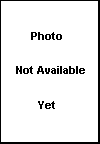WOW! What a night!
With the weather prospects a touch iffy in the SF Bay Area, and an
invitation to a dark sky site in the Sierra foothills, I went for a
long drive. From reports today, it sounds like the weather in the
Bay Area was good, and initially the weather at Fiddletown was pretty
bad. Lots of high cloud, with a few gaps, and a rolling low cloud
bank that covered us completely in the early evening. Gradually it
cleared and proved the weathermen right.
Fiddletown: 38.504N 120.754W Elev 2600 ft
At Fiddletown, were myself plus Steve Gottlieb, Ray Cash, Jim & Cherryl, and Charlie. Later Bob Kestner, the site owner, joined us
for the meteor shower itself. We had a variety of large reflectors,
in the 16 to 20 inch range, plus Ray's CCD equipped 4" AP. I did a
bunch of deep sky observing prior to midnight under skies that were
initially unstable but settled nicely to close to mag 7 visibility.
Often distracted by bright meteors, including one -3 mag, that
terminated in a shower of particles.
Soon after midnight I gave up using the telescope, as meteor watching
became dominant. Steve G bravely continued to solider on, knocking
off deep sky targets until after 1 AM, but even he was seduced by the
bright side, as the shower intensified.
From midnight on a steady stream rained down one every few seconds
(300+/hr), and after 1AM it started picking up approaching 1/sec
(3000+/hr) before 2AM, when the pace picked up, seeming to peak at
2:15-2:35 where we were seeing bursts of meteors in all directions
almost continuously. Probably around 5000/hr equivalent rate, and
perhaps significantly higher at times. We did a couple of timing
tests, counting over 30 in one minute prior to 2AM, and over 50
shortly after 2am, but were enjoying the view too much to continue
analyzing the shower :-)
The pace continued for a considerable time, while the "quality"
dropped a little after 3AM, when we saw fewer really bright meteors,
and more short trial fainter ones. It was still strong at 4AM when
most of us decided to sleep, and with cleaning up, and mucking around
I was also seeing a good rate at 4:30 when I couldn't keep awake any
longer.
Some observations:
The meteors seemed to arrive in bursts, or flurries. Sometimes there
would be a pause of a few seconds, before a new batch would arrive.
That was also in part illusory, as you can't see all the sky at once,
and while one person was saying something like "seems to be dying"
someone else would respond with: "while you were saying that I saw
3/4/5 behind your head!"
Many of the meteors left very good trails, and trains. With
binoculars we could watch the trails curl, snake, form helix like
patterns, or loops, and disperse. Scanning Leo revealed many many
trails flaring outward from the constellation. Indeed, late in the
night Leo looked "dusty", trailing behind the constellation was an
almost zodiacal-light type diffuse glow.
There were some exceedingly bright meteors, that flashed strongly
enough to cast shadows, and be visible from light reflected off
people, trees etc. even if you didn't see the meteor directly.
For a while I turned on the car FM radio, tuned to a non-local
frequency, but didn't hear any unusual noises. This wasn't something
I had tried before, but I will have a go at it again, when I
understand better how to do it properly.
It was a lot of fun having a bunch of adults be giddy with
excitement, many of them very experienced amateur astronomers,
totally enjoying the best meteor shower we'd ever seen.
